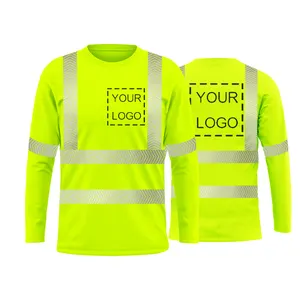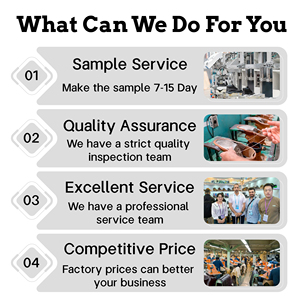
All categories
Featured selections
Trade Assurance
Buyer Central
Help Center
Get the app
Become a supplier

(581 products available)


















































Mechanical safety shoes come in various styles designed to protect feet in different scenarios. These shoes can comprise several functions, such as protecting against puncture, anti-static, and electrical hazards. Below are the various types of safety shoes suitable for various industrial applications.
Steel toe shoes are designed to protect the toes from falling objects or compression. These safety shoes incorporate a steel toe covered inside the shoe to provide maximum protection. They are primarily used in construction, manufacturing, and warehousing settings where heavy materials are handled.
Composite safety shoes offer toe protection using alternative materials like plastic, carbon fiber, or Kevlar. They are lighter than steel-toe shoes and do not conduct temperature or electricity, making them suitable for outdoor and electrical work environments.
Slip-resistant mechanic shoes are designed to guard workers against the risk of slipping, especially in wet or greasy environments. These shoes have specially designed treads that offer a firm grip to minimize falls.
Sneakers with a steel midsole protect sharp objects, such as nails and knives, from injuring the foot. This safety equipment is especially essential for those working in industries with a general risk of foot injuries, such as construction, manufacturing, and workshop environments.
The construction industry is notorious for its perilous working conditions. Therefore, participants need safety shoes for heavy object drops, foot wedging, puncture risks, and uneven ground. Steel or composite midsole puncture-resistant shoes reduce the risk of foot injuries while working in hazardous environments by protecting the foot from sharp items like nails and shards of metal. Slip-resistant shoes also enhance comfort and security when working in wet or slick settings, minimizing slips and falls. Special attention is given to footwear to ensure the best possible protection and performance in a setting rife with perils.
Just like construction, the manufacturing industry deals with many risks associated with working under heavy machinery and dealing with sharp tools. Therefore, people in this industry need safety shoes to increase comfort and productivity. Shoes with steel or composite toes protect against falling objects and heavy equipment. Shoes with steel midsoles also help prevent puncture accidents common in this industry. Other features, such as slip resistance and static-dissipating shoes, increase wearers' stability and electrical hazards, making them ideal for any mechanical frictional wear situation.
Those working in auto repairs face many risks, including working with heavy car parts and sharp tools. Automotive staff especially require puncture-resistant shoes because they frequently work in oily environments, exposing them to slips and falls. Because of this, auto mechanics need slip-resistant shoes with good traction to prevent slipping. Working in the automobile industry also has electrical maintenance, making static-dissipating shoes important protective gear.
Warehouses are other places in this B2B industry susceptible to mechanical injuries. Workers here manage huge volumes of item transport, which poses hazards. Since the work setting is dynamic and the workers are often on their feet, they must have comfortable yet safe footwear. Warehouse distribution workers need steel- or composite-toe shoes to protect heavy loads from crushing injuries. In addition, the shoes must be slip-resistant and static-dissipating because trace tools and electronic equipment are often handled in such environments.
Workers operating in retail and such industries work under varied conditions. However, they too frequently experience wet floors, spills, and other hazardous situations. Retail workers especially need comfortable and slip-resistant shoes because they often stand for long hours. They also work with electronic equipment that is sensitive, so static-dissipating shoes are a good option.
These shoes are easy to install, as any other shoe follows a normal methodology. However, there are a few things to look out for to ensure they are comfortable and safe. First, choose the right shoes; the bigger they are, the more likely they will slip off and cause accidents. Then, slip the feet inside the shoes and adjust the safety shoe straps and laces for a secure fit. Make sure that the toes are adequately protected by the reinforced toe caps and that the soles of the shoes are well attached. Last but not least, ensure that the outsoles have good grip and traction on surfaces one works on.
Following certain maintenance measures will increase the life of these shoes. Clean the shoes by wiping them gently on the outside with a wet cloth after every use. Never put them in water or expose them to excessive moisture. Keeping the insoles dry helps keep the shoes in good condition and reduces odor. However, mechanics don't have to worry about the state of their shoes because safety shoes are made to be repairable and last longer, even in heavy-duty conditions. Shoes often have outsole wear features; professional replacements for these outsoles optimize functionality. Shoes with steel midsoles and steel toe caps can be checked through manufacturer-recommended services.
One must pay particular attention to several criteria for safety shoes: durability, comfort, and performance. Therefore, here are the quality and safety measures to consider when choosing mechanic safety shoes.
A1: Puncture-resistant safety shoes have a midsole made of steel or composite material. This feature makes them good for working in hazardous environments where sharp objects are on the ground, like metal shavings and nails.
A2: To select appropriate shoes for hazardous working conditions, consider the risks involved. These factors include working with heavy items and sharp materials, which require shoes with toe protection and puncture resistance. Look for additional characteristics like slip resistance, static dissipation, and proper ventilation.
A3: Static electricity can significantly damage sensitive electronic products, causing malfunctions or destroying the parts. To mitigate these risks, one needs static-dissipating shoes, ideally for handling electronic equipment in environments susceptible to static discharge, such as assembly areas or laboratories.
A4: Regularly cleaning the shoes and letting them dry in a cool area will increase comfort and durability. Also, consider replacing worn-out insoles and examining the outsoles for signs of exhaustion. Don't forget to check the upper part of the shoes for cuts or damaged components.
A5: Safety shoes must be replaced whenever they become too old, worn out, or damaged. So do repairs when necessary, and look for worn-out soles, a damaged upper, or chipped toe caps. Generally, safety shoes last between 12 and 24 months, depending on the wear and tear.
A6: Since composite materials do not conduct heat or electricity, composite-toe shoes are suitable for electrical work. This means that while they are lighter and do not pose a risk as conductors, steel-toe caps protect the feet from compression.